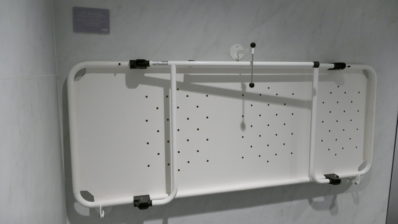Skeletal muscle regeneration depends on a specific stem cell population (called satellite cells) which are in a dormant state, until damage or stress triggers them to form new muscle fibres – as well as create new stem cells.
However, not all stem cells are equal. Although the regenerative functions of these stem cells are known to decline with ageing, a group of researchers from Europe and the US have identified a subgroup that maintains its regenerative capacity over time, declining only at geriatric age. We can see that in this image from the Cell Biology research group at the Department of Experimental and Health Sciences, Pompeu Fabra University (DCEXS-UPF), headed by Pura Muñoz-Cánoves, who has led this study.
Scientists have identified a subgroup of muscle stem cells that maintains its regenerative capacity over time, declining only at geriatric age.
The first column in the image shows young muscle cells, in the middle we see old cells and on the third column we can see geriatric tissue. In green (marked with the flourescent protein GFP) we can observe the cells that retain regenerative capacity.
This subset of cells that, surprisingly, resist the passage of time far more than expected, do so through the activation of the FoxO signalling pathway. This pathway, which has been associated with longevity, maintains the expression of a youthful gene programme.
The results suggest that compounds that activate FoxO may have a rejuvenating effect on aged muscle stem cells, giving some hope to people debilitated by the loss of muscle mass – the elderly, those with neuromuscular diseases, cancer, or inflamatory diseases.
Want to see your photo here? Send us your images related to science or life at the PRBB to ellipse@prbb.org.
Laura García-Prat et al. “FoxO maintains a genuine muscle stem-cell quiescent state until geriatric age”. Nature Cell Biology, 2020 (26 October). DOI 10.1038/s41556-020-00593-7.






